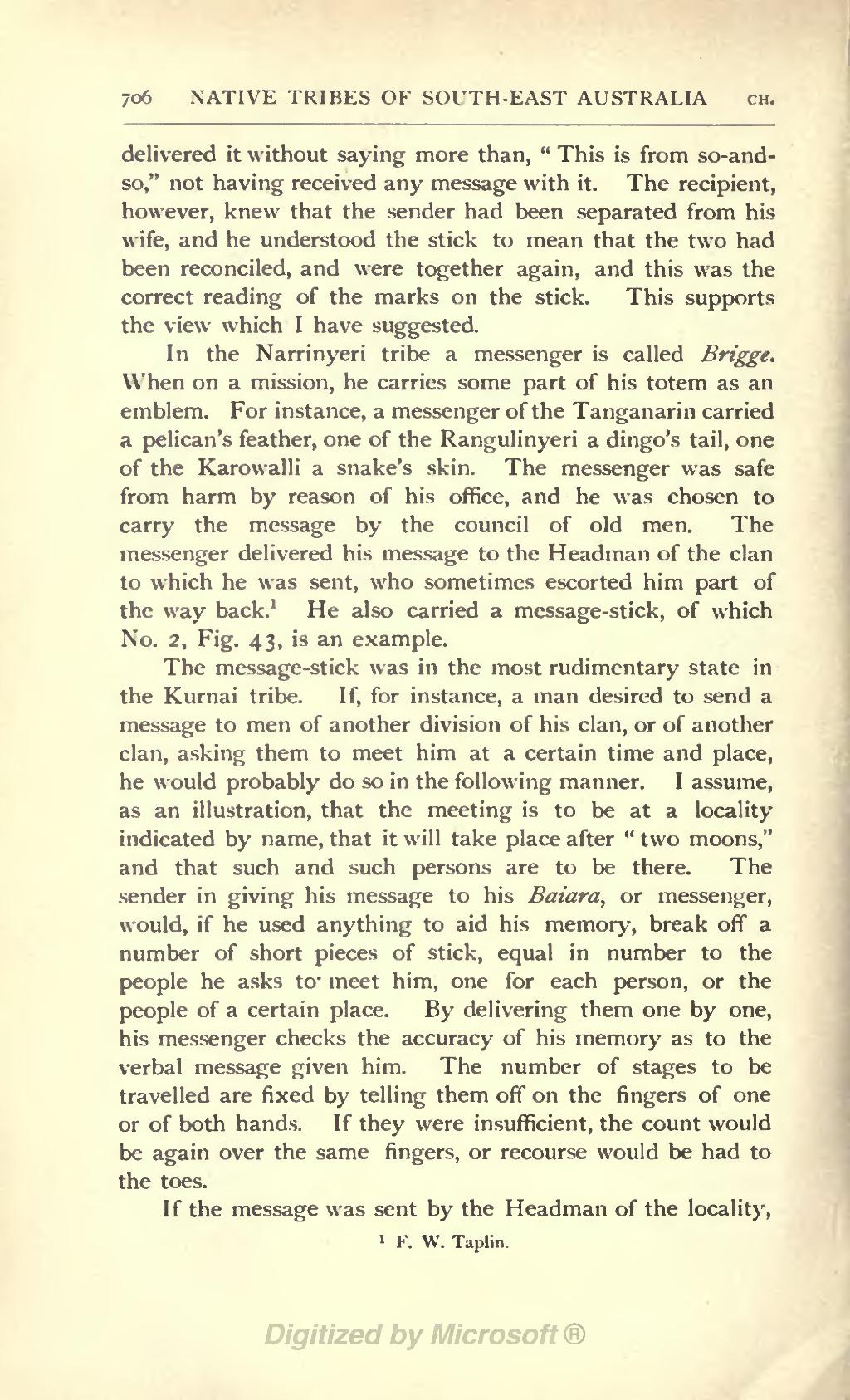delivered it without saying more than, "This is from so-and-so," not having received any message with it. The recipient, however, knew that the sender had been separated from his wife, and he understood the stick to mean that the two had been reconciled, and were together again, and this was the correct reading of the marks on the stick. This supports the view which I have suggested.
In the Narrinyeri tribe a messenger is called Brigge. When on a mission, he carries some part of his totem as an emblem. For instance, a messenger of the Tanganarin carried a pelican's feather, one of the Rangulinyeri a dingo's tail, one of the Karowalli a snake's skin. The messenger was safe from harm by reason of his office, and he was chosen to carry the message by the council of old men. The messenger delivered his message to the Headman of the clan to which he was sent, who sometimes escorted him part of the way back.[1] He also carried a message-stick, of which No. 2, Fig. 43, is an example.
The message-stick was in the most rudimentary state in the Kurnai tribe. If, for instance, a man desired to send a message to men of another division of his clan, or of another clan, asking them to meet him at a certain time and place, he would probably do so in the following manner. I assume, as an illustration, that the meeting is to be at a locality indicated by name, that it will take place after "two moons," and that such and such persons are to be there. The sender in giving his message to his Baiara, or messenger, would, if he used anything to aid his memory, break off a number of short pieces of stick, equal in number to the people he asks to meet him, one for each person, or the people of a certain place. By delivering them one by one, his messenger checks the accuracy of his memory as to the verbal message given him. The number of stages to be travelled are fixed by telling them off on the fingers of one or of both hands. If they were insufficient, the count would be again over the same fingers, or recourse would be had to the toes.
If the message was sent by the Headman of the locality,
- ↑ F. W. Taplin.
